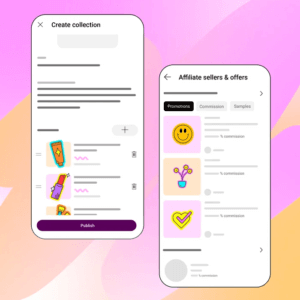In the ever-changing world of marketing, knowing how people behave as consumers is super important. It’s like the secret sauce for making strategies that really work for the people you want to reach. When you bring in bits of psychology into your marketing plans, it can make a big difference. This article is all about diving deep into how psychology can boost your marketing game, with real-life examples and tips specifically for CMOs who want to step up their marketing game.
Understanding Consumer Psychology
Consumer psychology delves into the mental and emotional processes that influence consumer behavior. By leveraging insights from psychology, marketers can create compelling campaigns that resonate with their audience on a deeper level. Here are some of the common principles:
1. Social Proof
The principle of social proof, popularized by psychologist Robert Cialdini, highlights the tendency of individuals to conform to the actions of others [1]. Marketers can harness social proof by incorporating testimonials, reviews, and user-generated content into their campaigns. By showcasing positive experiences from satisfied customers, brands can instill trust and credibility, encouraging others to follow suit.
Example: Airbnb utilizes social proof effectively by prominently featuring reviews and ratings from previous guests, fostering trust among potential travelers and driving bookings.

2. Scarcity and Urgency
Scarcity and urgency are powerful motivators that tap into the fear of missing out (FOMO) among consumers [2]. By creating a sense of limited availability or time sensitivity, marketers can prompt swift action and drive conversions.
Example: E-commerce platforms often employ countdown timers and limited stock notifications to create a sense of urgency, compelling consumers to make purchases before the opportunity expires.

3. Cognitive Biases
Understanding cognitive biases, such as confirmation bias and anchoring, allows marketers to influence decision-making processes subtly [3]. By framing information and presenting options in a way that aligns with consumers’ inherent biases, brands can sway perceptions and preferences.
Example: Subscription-based services offer free trials to capitalize on the endowment effect, where individuals place higher value on items they already possess. By experiencing the product firsthand, consumers are more likely to perceive it as indispensable, increasing the likelihood of subscription sign-ups.

4. Emotional Marketing
Emotions play a pivotal role in consumer decision-making, often outweighing rational considerations [4]. By evoking specific emotions, such as joy, nostalgia, or fear, marketers can forge deeper connections with their audience and drive engagement.
Example: Coca-Cola’s “Share a Coke” campaign personalized soda bottles with popular names, fostering a sense of belonging and nostalgia among consumers. The campaign’s emotional resonance led to increased sales and social media engagement.
5. Behavioral Economics
Drawing insights from behavioral economics, marketers can design pricing strategies and incentives that capitalize on consumers’ irrational tendencies [5]. Techniques such as price anchoring, bundling, and decoy pricing can influence purchase decisions and enhance perceived value.
Example: Amazon leverages price anchoring by displaying the original price alongside discounted rates, creating a perception of significant savings and encouraging immediate purchases.

Practical Implementation and Measurement
Implementing psychological principles into marketing strategies requires a systematic approach and ongoing measurement to ensure effectiveness. Here are some practical strategies for implementation and measurement:
1. A/B Testing and Experimentation
Split testing (also known as A/B testing), involves comparing two versions of a marketing asset to determine which one performs better. Marketers can test variations in messaging, imagery, call-to-action buttons, and layout to understand what resonates most with their audience [6]. By systematically experimenting with different elements, marketers can optimize their campaigns for maximum impact.
2. Personalization Strategies
Personalization has become increasingly important in marketing, with consumers expecting tailored experiences based on their preferences and behavior [7].
Leveraging data analytics and customer relationship management (CRM) systems, marketers can segment their audience and deliver personalized content and offers. Personalization extends beyond just addressing customers by name; it involves understanding their needs, interests, and purchase history to deliver relevant messaging that drives engagement and conversions.
As published in McKinsey’s “Next in Personalization 2021 Report” it appears that studies indicate that customization typically results in a revenue increase of 10 to 15 percent, although the actual lift can range from 5 to 25 percent depending on the organization and its industry-specific factors. As companies enhance their proficiency in leveraging data to deepen customer understanding and strengthen relationships, the potential returns also escalate. Particularly for digitally native enterprises that adopt a data-driven, direct-to-consumer approach, personalization isn’t merely a marketing tactic but an integral aspect of their operational strategy.
3. Data-Driven Decision-Making
Data is the lifeblood of modern marketing, providing valuable insights into consumer behavior and campaign performance [8]. CMOs should leverage analytics platforms and attribution models to track key metrics such as website traffic, conversion rates, and return on investment (ROI). By analyzing data trends and performance metrics, marketers can make informed decisions about where to allocate resources and optimize their marketing efforts.
Learn more about Angora Insights (Dashboard for CMO’s).
4. Customer Journey Mapping
Understanding the customer journey is essential for crafting effective marketing strategies that guide prospects from awareness to conversion [9]. CMOs can create customer journey maps to visualize the various touchpoints and interactions that customers have with their brand. By identifying pain points and opportunities for engagement, marketers can design targeted campaigns that address specific needs and preferences at each stage of the journey.
Here’s an example of a journey map communicates the various steps in the process of researching, driving, and purchasing a new car (source):

5. Feedback Loops and Continuous Improvement
Marketing is an iterative process that requires constant feedback and adaptation [10]. CMOs should establish feedback loops to gather insights from customers, sales teams, and other stakeholders. By soliciting feedback through surveys, focus groups, and social media listening tools, marketers can gain valuable insights into customer sentiment and preferences. This information can then be used to refine marketing strategies and tactics for continuous improvement.
6. Integration with Sales and Customer Service
Marketing cannot operate in isolation; it must align closely with sales and customer service to deliver a seamless experience across the entire customer lifecycle [11]. CMOs should collaborate with sales teams to understand the needs of prospects and develop targeted messaging and collateral. Similarly, marketing should work hand-in-hand with customer service to address inquiries, resolve issues, and nurture customer relationships. By aligning marketing, sales, and customer service efforts, organizations can deliver a cohesive brand experience that drives loyalty and advocacy.
Conclusion & References
By incorporating these practical strategies into their marketing approach, CMOs can effectively leverage psychological principles to understand consumer behavior and drive impactful campaigns. Through A/B testing, personalization, data-driven decision-making, customer journey mapping, feedback loops, and integration with sales and customer service, brands can create compelling experiences that resonate with their target audience and achieve their marketing objectives.
[1] Cialdini, R. B. (1984). Influence: The Psychology of Persuasion. HarperCollins.
[2] Kumar, V., et al. (2012). Creating a sense of scarcity. Journal of Marketing Research, 49(5), 725-738.
[3] Tversky, A., & Kahneman, D. (1974). Judgment under uncertainty: Heuristics and biases. Science, 185(4157), 1124-1131.
[4] Berger, J. (2016). Contagious: How to Build Word of Mouth in the Digital Age. Simon & Schuster.
[5] Kahneman, D., & Tversky, A. (1979). Prospect Theory: An Analysis of Decision under Risk. Econometrica, 47(2), 263-291.
[6] Kohavi, R., & Thomke, S. (2017). The Surprising Power of Online Experiments: Getting the Most Out of A/B and Other Controlled Tests. Harvard Business Review.
[7] Li, H., & Kannan, P. K. (2014). Attributing Conversions in a Multichannel Online Marketing Environment: An Empirical Model and a Field Experiment. Journal of Marketing Research, 51(1), 40-56.
[8] Kim, A. J., & Ko, E. (2012). Do Social Media Marketing Activities Enhance Customer Equity? An Empirical Study of Luxury Fashion Brand. Journal of Business Research, 65(10), 1480-1486.
[9] Fournier, S., & Avery, J. (2011). The Uninvited Brand. Business Horizons, 54(3), 193-207.
[10] Hughes, A. M., & Lee, D. H. (2015). Are You Talking to Me? How Voice and Type of Language in User Reviews Influences Persuasion. Journal of Consumer Psychology, 25(3), 360-373.
[11] Verhoef, P. C., Lemon, K. N., Parasuraman, A., Roggeveen, A., Tsiros, M., & Schlesinger, L. A. (2009). Customer Experience Creation: Determinants, Dynamics, and Management Strategies. Journal of Retailing, 85(1), 31-41.








